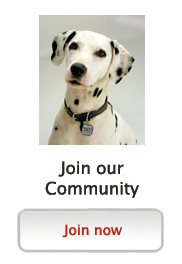Norwegian Buhund
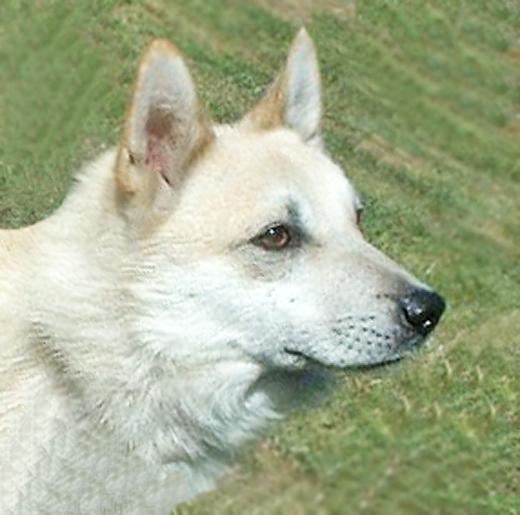
In my own words
My work ethic is impeccable, I will not leave until the job I set out to do gets finished. In fact if I am not able to fulfill my work load I will become depressed and a very unhappy dog, I may also become ill mannered and destructive. I posses an incredible amount of energy and enthusiasm so need many an outlet for this to be released. Give me herding to do, watching, agility, any type of sports, even just a lot of running and I will be satisfied. Because I’m related to the wolf, and because of my high level of intelligence I come with an independent streak, so I need to be trained and aware of my master, in order for me to love and trust you 100%. I’m great with children thanks to my even temperament and my affection. I still posses a lot of my natural traits, my Viking ancestors treated me ever so will and provided me constantly with jobs to do. Thanks to this my senses are all incredible keen still, my stamina and endurance are still on top form, and my devoted companionship is highly desirable
My ideal owner(s)
Active
Families
Can provide the breed with work to do.
Experienced
Athletic
What they say about me
Fun loving
Friendly
Agile
Energetic
Fearless
Brace
Is this Norwegian Buhund for you?
Test your knowledge about the Norwegian Buhund
Information essential about the Norwegian Buhund
Breeding Group - Herding
SIZE
Height - Female: 16–18 inches, Male: 17–19 inches.
Female: 12–16 kg, Male: 14–18 kg
Popularity:
Buhunds were virtually unknown outside of Norway until the 1920s, and only arrived in England shortly after the end of World War II, and were formally recognized by the British dog registry in 1968. It has also been extorted to the United States, France, Australia and other countries. Today, Buhunds are excellent obedience and agility competitors. They also are actively used as service dogs and in police work. These are high-energy animals that enjoy having a job to do. The Norwegian Buhund was accepted into the American Kennel Club’s Miscellaneous Class in January 2007. The breed became eligible for competition in all AKC events, as a member of the Herding Group, in 2009.
Breed History:
The Norwegian Buhund is an ancient breed. A member of the spitz family it travelled as companion and guard of the Vikings and is thought to be behind many other herding breeds such as the Icelandic sheepdog. The breed is one of a number of dogs loosely referred to as being of the “spitz type.” “Spitz” refers generally to so-called “Northern” or “Nordic” dog breeds that have conformational characteristics resembling those of wolves. The breed’s name is derived from the old Norwegian term 'bu' which refers to such concepts as farm, hut and livestock thus indicating the Buhund’s original use as a farm and herding dog. Its ancestors date back to about 900 AD, when the skeletons of six dogs closely resembling Buhunds were found in a Viking grave at the Gokstad excavation in Norway. According to historical reports, when Vikings died, their most treasured possessions were buried with them, to provide care and comfort in the afterlife. Dogs were among the most cherished of all Viking possessions. The Vikings travelled with their Buhunds on all of their journeys, both by land and by sea.
Character:
The Norwegian Buhund is a good, friendly family dog, and is usually good-natured and loyal. It is very active and needs exercise and stimulation. It is a very loving breed and is never happier than when it is on your knee being cuddled. A brave, dynamic, noisy dog, with very developed senses (hearing, smell, seeing), it is watchful and attentive. Devoted and affectionate with the family, it accepts the children. It gets along good with other dogs and other animals from the household. The strangers are just announced.
Buhunds are intelligent and love to learn, many work as hearing dogs for the deaf and as dogs for the disabled so if you are looking for a couch potato do not look here. He’s a happy-go-lucky breed that plays vigorously, yet is also light on his feet and very agile. More than some other spitz breeds, he likes to be at the center of his family, demanding (and offering) a great deal of companionship. Most Norwegian Buhunds are friendly (or at least polite) with strangers, yet with their keen senses and watchful attitude, they make dependable alarm dogs. Buhunds are usually fine with other family pets if raised with them.
The Norwegian Buhund is less headstrong and more willing to work with you than other spitzes, but he is still independent and may use his intelligence in clever ways that suit his own purposes. Yet owners who know how to lead will find him eminently trainable.
Like most herding breeds, the Norwegian Buhund is uncomfortable when his flock (family members and other pets) is scattered every which way. He may try to gather everyone together by circling, poking, and nipping. He barks a lot in a rapid, high-pitched voice. Because of their independent minds, they are not pushovers to raise and train. They are often manipulative, and some are willful and obstinate. You must show them, through absolute consistency, that you mean what you say.
Temperament:
A well balanced, medium sized dog, free from exaggerations, and capable of arduous work. A Buhund’s eyes are a dark brown giving him a lively and fearless expression. The Norwegian Buhund makes an excellent housedog and their warning bark will deter unwelcome visitors despite their relatively small size. However, it is not in their nature to defend. If trained correctly they can be very obedient though you will have to be very dedicated to achieve success with a Buhund if you intend to do obedience work seriously. The Buhund is a clever dog, he will discover your weak spots even before you are aware of them. The instinct to work is still present, so if you live in an area where there is livestock you must be prepared to make doubly sure that your Buhund is not allowed to wander as anything on four legs could be chased and a farmer will not hesitate to shoot at the dog he thinks is worrying livestock, whether it is or not. A dog, which is off the lead, is not under control as far as the law is concerned. Most Buhund owners who have owned both sexes will agree that unlike many breeds, the males tend to be more affectionate and loyal than the bitches. The bitches tend to be very self possessed and often prefer their own company, whereas a male will be quite happy to spend all his time in your company. Both dogs and bitches can have a very strong guarding instinct, and in both sexes this must be discouraged right from the beginning or the over-indulgent owner may well find that the dog considers some part of the house to be exclusively his, rather than his owner's. Buhunds usually adapt effortlessly to a wide variety of new situations and are not known to be suspicious or wary around strangers. They are not high-strung, fussy or clingy dogs, nor are they overly boisterous or pushy. In fact, most Buhunds have an independent streak and tend to do just fine if they need to be left alone for a reasonable period of time. One thing to watch is like people some Buhunds take an instant dislike to certain other dogs, often for no apparent reason.
Conformation:
The Buhund is a little under middle size, squarely built and has a dense, flat-lying coat. The ears are pointed and erect and their shape and size should harmonize with the head. The tail is carried firmly curled over the back. The Norwegian Buhund hails from Norway, where he was responsible for herding livestock and guarding the farm. He has a trait that's rare among the Spitz breeds: a desire to please. Add in his intelligence and independence, and you get a highly trainable and capable dog. He can handle jobs ranging from hearing dog, to police dog, to competitor in agility and obedience trials. His alert nature and tendency to bark make him a good watchdog, although he's probably too friendly to pose any real threat.
This is an active--some say tireless--breed who needs a lot of vigorous exercise and playtime daily. He's highly affectionate with his family, including the kids, and enjoys a cuddle on the couch as well as a romp in the park. Kind, consistent training is essential for this smart dog, as is family involvement. He won't want to be left out of anything!
Colour:
Black, Wheaten, Red Wheaten
Training:
The dog’s need very firm handling from the start, as they are very likely to try to dominate their owners at some stage in their development, particularly when they are at the adolescent stage.
Owning and training a puppy requires much hard work and patience. The puppy will need to be taught everything. House-training is not something nature teaches, Buhunds are usually quick to learn. The puppy will have to adapt to new people and surroundings and will, if given the opportunity go through a phase of testing its teeth on all sorts of things as all puppies do. Buhund puppies are also very energetic, often not realising that they are tired. No one ever told the Buhund that puppies should sleep for most of the day.
The Buhund has been bred as a working farm dog for centuries and it is still bred to be an active dog, capable of arduous work. He will take as much exercise as you can give him, once he is fully grown, but, provided he is also mentally exercised, he will be equally happy with just a few short walks a day. Like most of the pastoral breeds, the Buhund is an intelligent dog and so easily becomes bored if left alone or ignored for long periods. When he is bored he is quite likely to cause trouble and become destructive. Likewise, while a Buhund will be quite happy to live part of his day in a kennel and run, if he does not receive sufficient attention he will simply bark at anything and nothing.
Care:
They are very hardy dogs, usually only going to the vet's for their boosters and they can stand the cold very well – although they do like a nice fire in the winter! Being a Scandinavian breed, they are not so happy in very hot weather and prefer to sleep away the hot days in a shady corner. They have a thick double coat consisting of a soft woolly undercoat and a topcoat of harsher, waterproof hair. Their coats need very little attention for most of the year, just a brush or comb tow or three times a week.
Its average life span is 12 to 15 years.
Health:
Generally speaking the Buhund is a remarkable healthy breed and most will only visit the vet's for injections. They do have the occasional ear or eye infection and some tend to be more accident prone than others. Properly cared for, the Buhund should live an active life well into their teens.
Until 1985 it was thought that, unlike most other breeds, a hereditary diseases did not affect the Buhund. However, it has been discovered that there is an incidence of Hereditary Cataract in the breed. In most cases the dog's sight is only minimally affected. There have been a small number of cases of epilepsy and a few of hip dysplasia.
You may also like:
If you like Norwegian Buhunds, you may be interested in breeds of the same size »
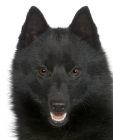

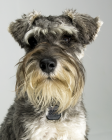
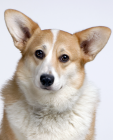
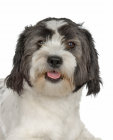
If you like Norwegian Buhunds, you may like other breeds with similar characteristics »
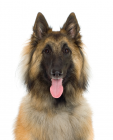

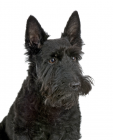
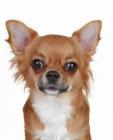
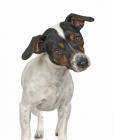
Advice on choosing your breed »
Find an animal shelter or rescue home where a Norwegian Buhund is waiting for a new home »
If you are looking for a dog that is big enough to be a proper dog, but small enough to be easily handled, likes a lot of physical exercise, likes to be mentally challenged. Is independently minded and very intelligent, but will be a good friend. Then the Buhund may be the one for you. Just make sure you are an experienced dog owner and have some knowledge of the Spitz or other working breeds. A young Buhund needs a lot of time and patience to train but will result in a well-balanced, friend breed. Also be aware for some barking and be prepared for traces of hair left over the house. If you are very house-proud, then the Buhund is not for you. During the molt your dog will need brushing every day and your house will need hoovering at least twice. They are intelligent and very affectionate towards people. They are happiest in home environment as they enjoy being with people and adapt very well to being a member of the family.
Be the first to rate this breed »
|
*PLEASE NOTE: All our breed profiles are general, and all dogs are individuals. Always talk to the breeders and meet the owners you are buying from. Try to meet the dog and its parents if it is a puppy in their home environment.









